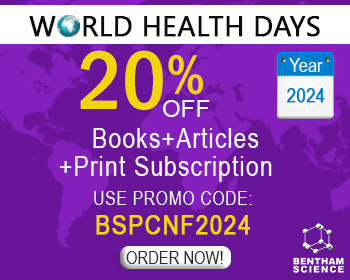Abstract
Recent developments in high-content screening (HCS) technologies make it an attractive alternative for anti-angiogenic drug discovery. HCS integrates high-throughput methodologies with automated multicolor fluorescence microscopy to collect quantitative morphological and molecular data from complex biological systems. Organotypic systems based on primary vascular cells model many facets of angiogenesis. The adaptation of these complex in vitro assay systems to high-throughput HCS formats with automated image acquisition enables large-scale chemical library screening campaigns. These HCS principles can be extended further to allow small molecule compounds in in vivo model organisms such as zebrafish. In this review we discuss the latest developments within automated imagebased high-throughput screening of chemical libraries for anti-angiogenic compounds.
Keywords: Angiogenesis, high-throughput screening, high-content imaging, HCS, HTS, PDGF, bevacizumab, fibroblast growth factor, Sunitinib, SU11248, Sorafenib, BAT43-9006, PTK787, ZK222584, Axitinib, AG013736, Vinblastine, Paclitaxel, Epothilones, tastatins, EC-vSMC, CAM, LOPAC1280, SU4312, Cognition Network, Technology (CNT), LOPAC
Current Pharmaceutical Design
Title: Imaged-based High-Throughput Screening for Anti-Angiogenic Drug Discovery
Volume: 16 Issue: 35
Author(s): Lasse Evensen, Wolfgang Link and James B. Lorens
Affiliation:
Keywords: Angiogenesis, high-throughput screening, high-content imaging, HCS, HTS, PDGF, bevacizumab, fibroblast growth factor, Sunitinib, SU11248, Sorafenib, BAT43-9006, PTK787, ZK222584, Axitinib, AG013736, Vinblastine, Paclitaxel, Epothilones, tastatins, EC-vSMC, CAM, LOPAC1280, SU4312, Cognition Network, Technology (CNT), LOPAC
Abstract: Recent developments in high-content screening (HCS) technologies make it an attractive alternative for anti-angiogenic drug discovery. HCS integrates high-throughput methodologies with automated multicolor fluorescence microscopy to collect quantitative morphological and molecular data from complex biological systems. Organotypic systems based on primary vascular cells model many facets of angiogenesis. The adaptation of these complex in vitro assay systems to high-throughput HCS formats with automated image acquisition enables large-scale chemical library screening campaigns. These HCS principles can be extended further to allow small molecule compounds in in vivo model organisms such as zebrafish. In this review we discuss the latest developments within automated imagebased high-throughput screening of chemical libraries for anti-angiogenic compounds.
Export Options
About this article
Cite this article as:
Evensen Lasse, Link Wolfgang and B. Lorens James, Imaged-based High-Throughput Screening for Anti-Angiogenic Drug Discovery, Current Pharmaceutical Design 2010; 16 (35) . https://dx.doi.org/10.2174/138161210794455030
| DOI https://dx.doi.org/10.2174/138161210794455030 |
Print ISSN 1381-6128 |
| Publisher Name Bentham Science Publisher |
Online ISSN 1873-4286 |
Call for Papers in Thematic Issues
"Tuberculosis Prevention, Diagnosis and Drug Discovery"
The Nobel Prize-winning discoveries of Mycobacterium tuberculosis and streptomycin have enabled an appropriate diagnosis and an effective treatment of tuberculosis (TB). Since then, many newer diagnosis methods and drugs have been saving millions of lives. Despite advances in the past, TB is still a leading cause of infectious disease mortality ...read more
Current Pharmaceutical challenges in the treatment and diagnosis of neurological dysfunctions
Neurological dysfunctions (MND, ALS, MS, PD, AD, HD, ALS, Autism, OCD etc..) present significant challenges in both diagnosis and treatment, often necessitating innovative approaches and therapeutic interventions. This thematic issue aims to explore the current pharmaceutical landscape surrounding neurological disorders, shedding light on the challenges faced by researchers, clinicians, and ...read more
Emerging and re-emerging diseases
Faced with a possible endemic situation of COVID-19, the world has experienced two important phenomena, the emergence of new infectious diseases and/or the resurgence of previously eradicated infectious diseases. Furthermore, the geographic distribution of such diseases has also undergone changes. This context, in turn, may have a strong relationship with ...read more
Melanoma and Non-Melanoma Skin Cancer Treatment: Standard of Care and Recent Advances
In this thematic issue, we aim to provide a standard of care of the diagnosis and treatment of melanoma and non-melanoma skin cancer. The editor will invite authors from different countries who will write review articles of melanoma and non-melanoma skin cancers. The Diagnosis, Staging, Surgical Treatment, Non-Surgical Treatment all ...read more
 19
19
- Author Guidelines
- Graphical Abstracts
- Fabricating and Stating False Information
- Research Misconduct
- Post Publication Discussions and Corrections
- Publishing Ethics and Rectitude
- Increase Visibility of Your Article
- Archiving Policies
- Peer Review Workflow
- Order Your Article Before Print
- Promote Your Article
- Manuscript Transfer Facility
- Editorial Policies
- Allegations from Whistleblowers
- Announcements























